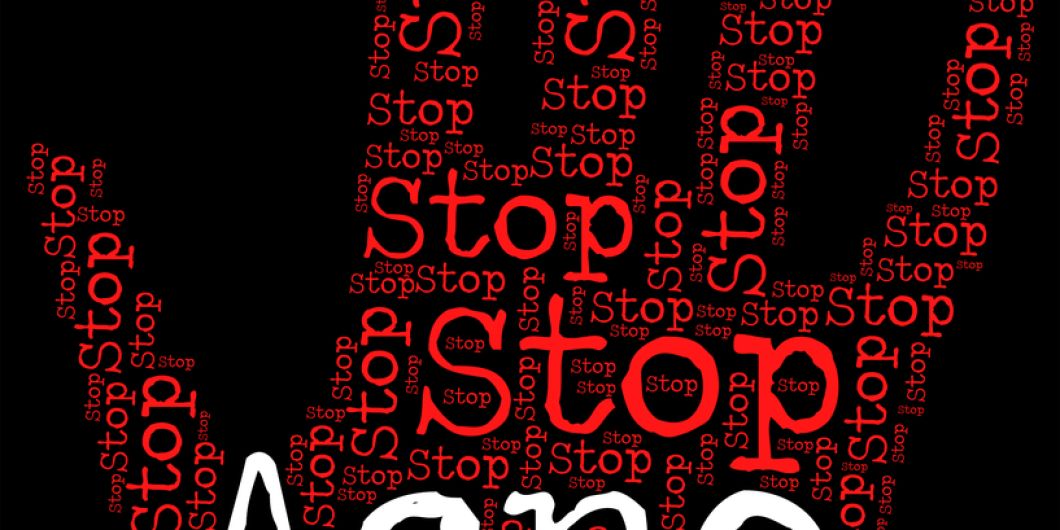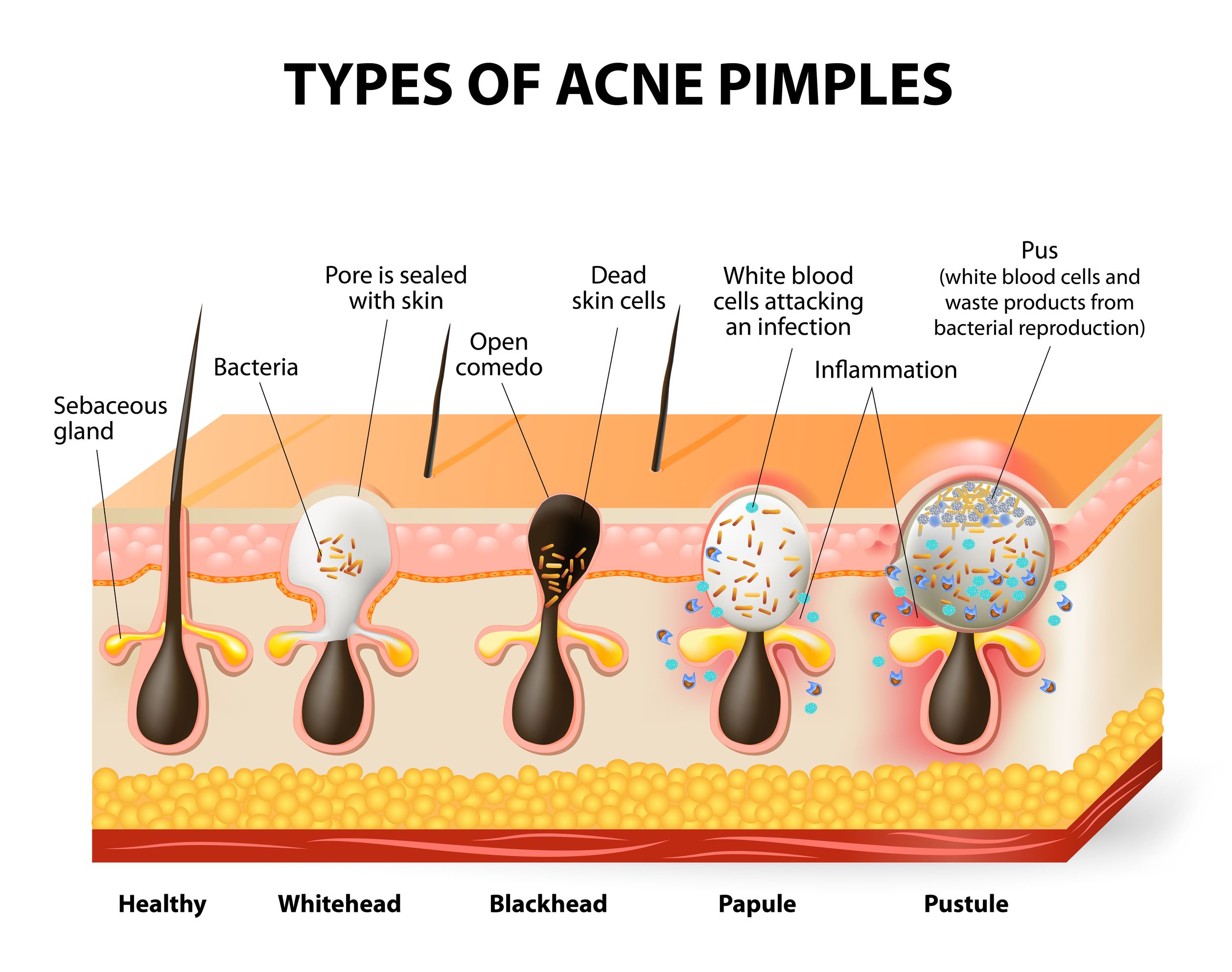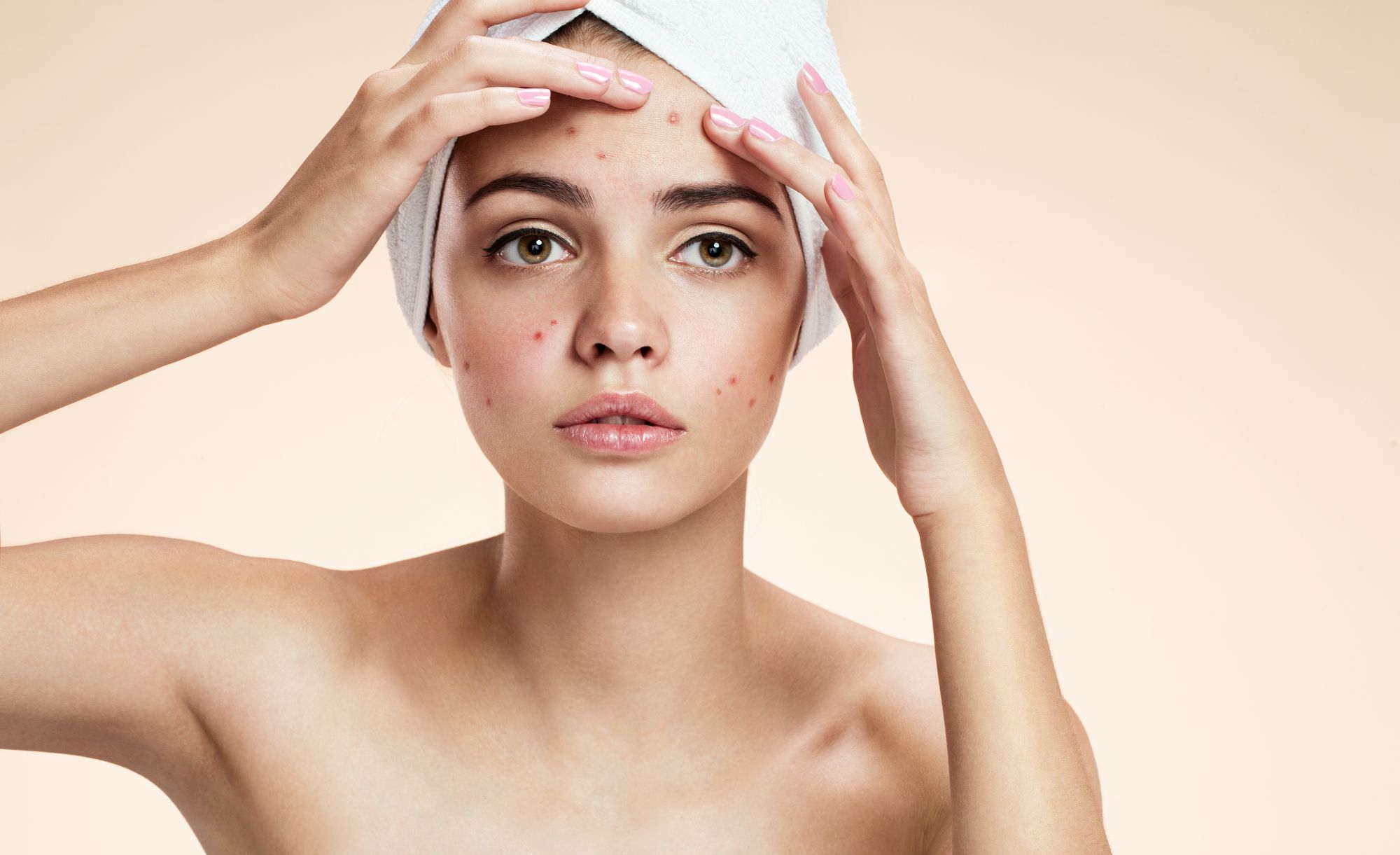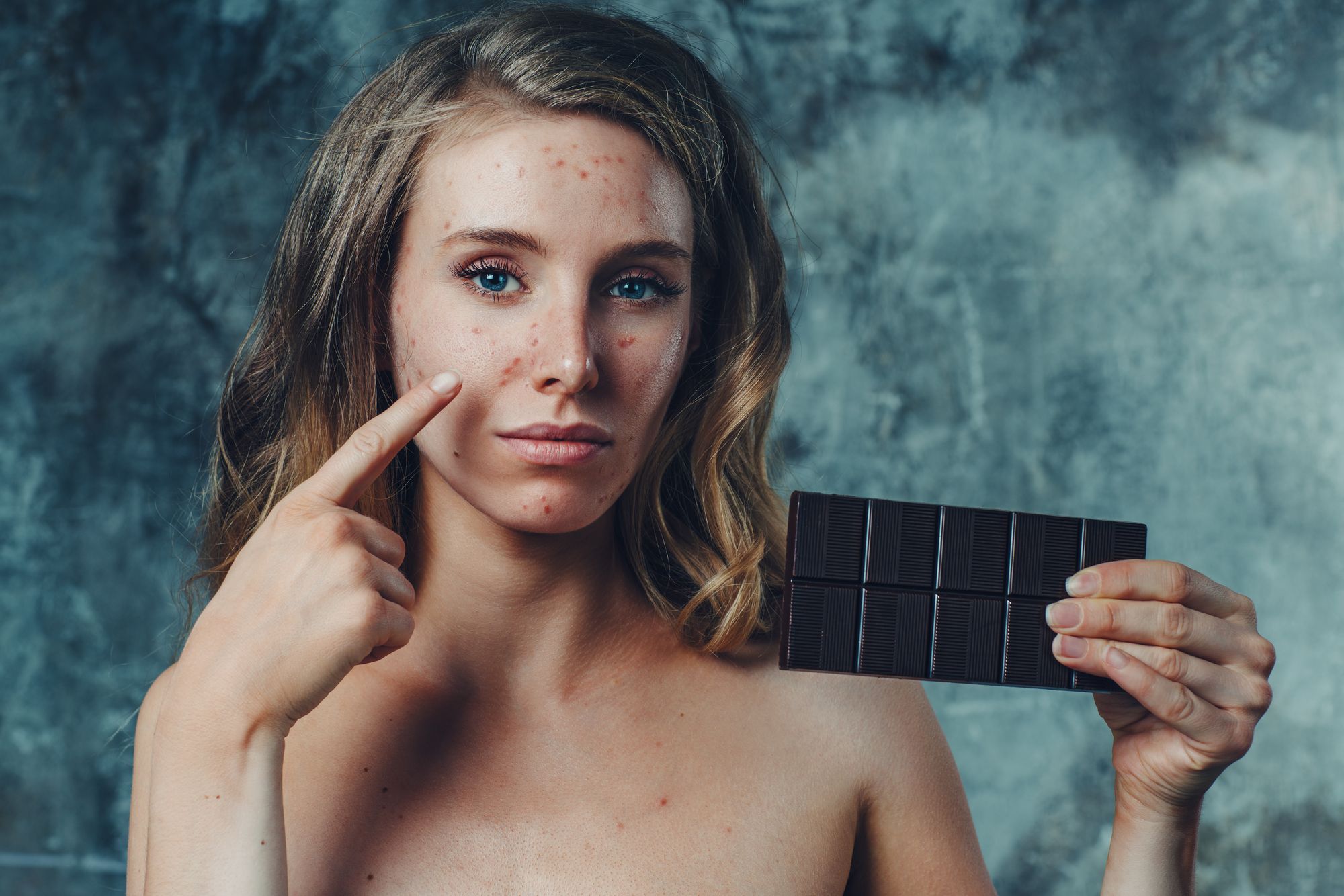Acne vulgaris – causes and symptoms

Acne vulgaris can be an embarrassing subject. The causes of acne, especially in adults, might really surprise you. For many years, people believed that acne was caused by eating too much chocolate or by a lack of good hygiene.
More...
Causes of acne vulgaris
This caused even more embarrassment to the people who suffer with acne. It often made them ashamed and anxious.
Anxiety is now believed to increase the incidences of acne in adults.
Although diet and skin care can be factors when pimples are involved, acne is generally not attributed to either factor exclusively. The major influence on acne is thought to be your hormone levels.
Until the glands in your skin are mature, acne is relatively rare. Babies and young children do not suffer from acne routinely. This is because your body uses hormones in order to develop and grow and most of these hormones are released during puberty.
Acne is seen most often during puberty when hormones are at their highest levels.
The sebaceous glands in the skin produce something called sebum. This is an oily substance which keeps your skin and hair moist. Sebum is also the preferred nutrient for a certain bacteria which resides on normal skin. This bacterium uses the sebum to multiply quickly causing white blood cells to enter hair follicles on the surface of the skin.
The white blood cells are supposed to lower the levels of bacteria on your skin, but they actually allow an enzyme to enter the walls of the follicle and cause damage. This creates a pustule or nodule that most people call a pimple.
Pimples associated with acne are common in most teenagers. They are also common during hormonal fluctuations associated with pregnancy, menstruation or high stress levels.
This means that almost a quarter of the adult male population and over half of the adult female population will have acne vulgaris at some point in their adult lives. Women have acne more commonly than men because of increased hormonal changes associated with pregnancy, menstruation and menopause.
Although you cannot really change your hormonal biology easily, there are other factors that lead to acne and pimples on your skin. Some of these factors can include your diet and exercise program or the lack of an exercise program.
Eating a diet that is high in fats and sugars tends to affect your insulin levels in drastic ways. Insulin is considered a master hormone in your body. When this hormone increases and decreases rapidly, you become more susceptible to acne.
Lack of exercise and a poor diet can also increase your levels of stress. Increases in stress levels can cause increases in certain hormones in the body. Once again, these hormone levels changing rapidly can cause acne outbreaks.
In conclusion, controlling your hormone levels with medication or exercise and diet can drastically decrease the acne and pimples which blemish your skin.

Hormonal acne
Until recently, acne vulgaris was considered to be a disease caused by oily skin or too much junk food. Scientists and physicians have discovered that certain forms of acne are actually caused by hormonal fluctuations in the body. This means that some types of the disease are not related to hygiene or oily foods at all. Hormonal acne is thought to be caused by abnormal fluctuations in the hormone levels of a person's body.
Hormonal acne is a completely different form of the disease, but the symptoms are often very similar to standard acne symptoms. Hormonal acne is more prevalent in women than in men and affects about half of the female population at some point in their lives.
To understand hormonal acne, it is easiest to begin with puberty. At the onset of puberty in both men and women, hormone levels increase. These bursts of hormones include one powerful hormone in particular which is called androgen.
Androgen is a male hormone that is present in women as well as men. A large amount of androgen released into the blood stream can cause an increase in oil production on the skin. This can help to feed the bacterium that causes acne pustules. The damage to the pores and hair follicles will even lead to scarring if left untreated.
Women are more often diagnosed with hormonal acne because of the hormonal changes that affect women throughout their lives. Pregnancy, menstruation and menopause are all large contributing factors to female hormonal acne.
A woman who continues to have the disease after reaching puberty is most likely experiencing an imbalance in hormones which causes acne vulgaris . This disease is more difficult to treat than any other form of acne. Women are often prescribed birth control pills or androgen blocking medications in order to create a balance in the hormone levels.
Diet can be a factor when treating hormonal acne. Insulin levels in the body can be monitored to see if there are fluctuations which could cause an imbalance. When insulin levels change drastically throughout the day, there is an increase in the production of stress hormones like cortisol.
It is believed that these stress hormones contribute to an increase in acne pustules especially on the face. Patients are often advised to eat foods that are low in sugar and starch and increase their water intake.
This approach is believed to help to regulate the hormone levels in the body. Regular exercise is also recommended in order to regulate the hormone levels in the blood stream. Exercise helps to decrease cortisol levels and insulin levels at the same time.
Skin cleansers and topical medications do have some affect on hormonal acne, so they are still recommended by many physicians. Treatment with oral medications and topical steroids are also considered for hormonal acne. A combination of therapies is most likely to improve your acne problem.

Acne vulgaris diet
There are many diets that are described as having foods which will defeat acne. Because each person is different, many cases of acne are different as well. A diet that will help one person may do nothing for a second person. The key to treating your acne through dietary changes is to be flexible and try several diets.
Adding organic green tea to your diet is an excellent way to begin your acne fighting challenge. Green tea is filled with antioxidants which are thought to boost your immune system and create a body that is strong and healthy. Green tea is also used to aid in skin regeneration which will prevent acne scarring. Boiling your own green tea rather than purchasing tablets or bottled tea is the best way to gain all of the benefits from this natural product.
The very best diet for acne sufferers will also include fruits and vegetables in many varieties. Hormonal causes of acne are often treated with radical diet changes including the removal of red meat, refined sugar and most wheat products from the daily menu.
The average diet that is recommended for diabetic patients is also beneficial for people with acne. This can mean that you would avoid eating processed foods and begin eating natural fruits and vegetables.
Berries and watermelon are among the best fruits for treating acne. Blueberries, blackberries and raspberries are high in phytochemicals, thought to protect the skin. The fruit must be fresh and you cannot substitute frozen or dried berries in your diet. Watermelon can be used to add excellent hydration to the skin and to help control oil production.
Often, avoiding specific foods might be considered as important as eating specific foods. Some foods to avoid include whole milk and other full fat dairy products and foods that contain trans fats. Fried foods and sugary snacks cause fluctuations in your blood sugar and hormonal imbalances that can worsen existing acne problems.
Certain types of acne are considered completely hormonal and imbalances caused by foods are thought to trigger this type of disease. Chocolate is not generally considered a big culprit in acne outbreaks, but the sugar that is used to create the chocolate candy is a problem. Most chocolate contains a large amount of sugar which in turn causes insulin fluctuations.
Some foods can actually be applied directly to the skin to clean pores. These foods include watermelon rind and lemon slices. Lemon slices have a small amount of mild acid that could help to heal damaged skin and remove pustules that have begun to scab. Scrubs for the face that are made of baking soda are also recommended by many dermatologists.
Acne skin care
Suffering from acne can cause so much embarrassment that many people would rather not discuss their condition. Because of this issue, good advice for acne sufferers is sometimes difficult to find. Visiting a dermatologist is not the only answer to caring for skin to minimize acne and scarring.
The easiest way to begin your skin care regimen is by learning to wash your face correctly. This includes purchasing a product or face wash which contains benzoyl peroxide or salicylic acid. These products can help to eliminate surface bacteria and unclog pores quickly. Both ingredients are helpful at eliminating the redness associated with acne pustules as well.
The drying action of the face washes does tend to cause some peeling of the surface layers of skin. This can be countered by adding a light moisturizer to your skin care routine. Choose a moisturizer which is water-based only.
Washing your face should begin with warm water and a clean wash cloth. Pour a small amount of facial scrub onto your wash cloth and use small gentle circles to remove all make up and debris from your skin. Rinse your skin thoroughly with warm water and then pat gently to dry. Try not to rub the towel against your face roughly.
Any added abrasions on the skin can actually cause your skin to create more oils. These oils can lead to an increase in pustules rather than a decrease, making washing your face a hazard to your skin.
If washing with over-the-counter medicated lotions is not helping your condition, you may have acne which is caused by fluctuations in your hormones. This type of acne is more difficult to treat but does begin with the use of benzoyl peroxide or salicylic acid lotions.
In the case of hormonal acne, many dermatologists also recommend topical vitamin A or prescription topical creams. These include Retin-A and antibiotic ointments applied to the affected areas.
Eating well is another way to help control your acne. Fresh fruits and vegetable provide nutrients which keep your skin healthy and help to eliminate scarring. Berries are considered one of the most important fruits for healthy skin. They contain antioxidants which are thought to protect and regenerate skin cells quickly.
Avoiding foods that can cause fluctuations in your hormones will also help with your skin problems. Acne thrives on hormonal imbalances and these imbalances are often caused by eating certain foods. Avoiding refined sugar, processed or bleached flour and any foods that are fried can certainly help keep your skin clear and supple by eliminating big changes in your insulin levels.
The lack of specific vitamins can also increase your acne problems. Vitamin A and vitamin E are very important for your skin's overall health. Taking these vitamin supplements might actually help to restore the cells in your skin and aid in the reduction of redness and pustules caused by acne.

Acne vulgaris treatment
When you have a disease like acne, searching for a cure can become an obsession. Because untreated acne can lead to scarring of the skin, many people are desperate to find a way to control their acne problems. There are a large number of treatments available for people suffering with acne, especially when the acne affects the facial area.
The first stage in treating visible pustules or pimples is generally accomplished in a topical way. You are encouraged to wash your face and hair regularly.
Anti-bacterial soap is an excellent choice for face washing because the soap actually helps to kill the cause of your acne. The problem with anti-bacterial soap is that it does tend to dry your skin. Moisturizing with a very light moisturizer which is not oil-based will help with the dryness.
You should always avoid touching or picking at the skin, especially on your face, because this can cause scarring. Once you have gotten used to this routine, you can begin using over-the-counter topical medications that contain Resorcinol and sulfur. These creams and ointments can aid in healing your skin and keeping pores unclogged.
If frequent washing and over-the-counter medications are not helping to treat your acne problems, there are further steps that can be taken. Oral and topical antibiotics are sometimes prescribed by dermatologists to treat acne.
If the skin becomes inflamed or infected, these medications can help to relieve the infection. This does not always help treat the underlying condition and often the acne continues to be a problem.
There are other medications which are prescribed to actually peel the skin. This drying and irritating of the skin does help to remove the dead cells and bacteria from the surface of the skin. Unfortunately, red skin and blistering are not uncommon side effects.
Drugs such as Retin-A and Accutane and birth control pills are also prescribed for severe acne problems. These drugs offer some relief but also have many side effects.
Once you've reached the limits of Western medicine, there are some interesting alternative therapies available to acne sufferers.
These therapies include Chinese herbal medications which combine many herbs to create a balance or change in the energy of the body. This change is thought to heal your skin from the inside of your body rather than by using external medications.
Often herbal supplements are taken in large quantities for a period of time prescribed by the physician. The interesting thing about Chinese herbal treatment is that the treatment is tailored for each specific person rather than for the disease itself. This means that your particular herbal prescription might be completely unique.
As with most diseases, not every treatment is effective for every person. You might want to consider trying a combination of treatments to see results in your particular situation. In most cases, acne treatment is not a simple process and takes dedication from both the patient and the physician.
acne means eruption and vulgaris means common
so acne vulgaris is a common skin eruption that happens when hair follicles or pores get blocked by particles like dead skin cells or oil once hair follicles are blocked they form small raised red bumps on the skin acne is particularly common among teenagers because of the skin changes that happen during puberty
acne can be categorized into different types based on specific characteristics for example mild acne usually consists of whiteheads and blackheads
moderate acne usually consists of pustules and severe acne usually consists of cysts and nodules
now the skin is divided into three main layers the epidermis dermis and hypodermis the epidermis forms the thin outermost layer of skin and has 5 sub layers
the stratum corneum as the outermost layer followed by the stratum granulosum the stratum spinosum and the stratum basale II in the palms and feet which are areas of thicker skin
there's a fifth layer called the stratum lucidum which is around one cell layer thick underneath the layers of the epidermis is the dermis and it's mainly made of connective tissue but also contains nerve endings hair follicles sweat glands sebaceous glands lymphatic vessels and blood vessels focusing on the hair follicles
each one contains a strand of hair composed of the shaft root and bulb that sits in the follicle the hair follicle is epidermal tissue that dips down into the dermis and is associated with other structures like a Pokhran glands sebaceous glands the erector pili muscle and nerve receptors
now sebaceous glands or oil glands are located in the dermis layer of the skin and are connected to hair follicles each sebaceous gland secretes an oily substance called sebum into a nearby hair follicle or through pores that extend directly to the skin surface sebum is a substance made of different fatty acids and waxy esters to help transport nutrients in lubricate the skin as it turns out erector pylab mussels surround the sebaceous glands
so when these tiny muscles contract sebum gets squeezed out sebum softens the hair shaft preventing it from becoming brittle sebum also prevents moisture loss from the skin and is slightly acidic which helps to deter pathogens and below all of this is the hypodermis which is made of fat and connective tissue that anchors the skin to the underlying muscle the cause of acne is not completely understood but we do know that there are a few main factors that contribute to acne formation keratin plugs sebum and bacterial overgrowth
first there's keratin plugs which are tiny clumps made of dead charata sites the protein keratin and the pigment melanin wind karate sights and hair follicles over produce keratin it's called hyperkeratosis it leads some more keratin plugs forming and these little carrots and plugs block the opening of the hair follicle second their sebum which is released by sebaceous glands in response to increased androgen production like during puberty
in both boys and girls the sebum contributes to clogging up the follicles and causes blockage just like the keratin plugs now when there's an excess in keratin plugs or sebum or both it can start to fill up a hair follicle but not quite plug it up all the way if there are follicle is still open to the surface of the skin and it's called an open komodo and it looks black so it's also called a blackhead blackheads look black because melanin in the keratin plug ends up getting oxidized when it's exposed to air and becomes dark in color
now the third factor to consider in acne is bacteria like Propionibacterium which are always living within the follicles
normally these bacteria don't cause any problems they're part of the normal skin flora but if the hair follicle gets completely plugged up with keratin plugs in sebum then it creates a closed environment and it's called a closed Komodo in a closed comedones thing on the keratin plugs in sebum and they have no place to go resulting in bacterial overgrowth
the overwhelming number of bacteria attracts immune cells which head over and start attacking the bacterial cells the result of this mix of bacterial cells and immune cells is white pus with surrounding red inflammation and it's called a Whitehead or a pimple
now there are a variety of genetic and environmental factors that can lead to acne both blackheads and whiteheads for example hyperkeratosis can have a genetic component and often runs in families in addition hormones as well as using specific physical products and behaviors can also lead to hyperkeratosis
for example women with polycystic ovarian syndrome have increased androgen hormone levels which leads to more sebum and therefore more acne also psychological stress increases the release of cortisol a hormone that stimulates sebum secretion acne affects a person's appearance and that can cause severe psychological stress creating a vicious cycle physical products and behaviors include the use of certain moisturizers and cosmetics that can block pores
similarly doing things like wearing a headband can irritate the skin in block pores and that's called contact acne or acne Vanna nada
also washing the face excessively can irritate the skin surface predisposing it to acne formation finally some studies have found links between low fat dairy and acne as well as a correlation between compounds in chocolate
acne vulgaris most often happens on the face chest shoulders and back the sites of oil glands and it can be categorized into four types based on severity
in type 1 or mild acne there's no scarring and only a few small comedones
in type 2 or moderate acne there's also no scarring but there are large closed comedones called papules which sometimes break in leak out pus
in type 3 or moderately severe acne there's some scarring along with popular acne as well as pustular acne which are comedones that contain necrotic or dead tissue
in type 4 or severe acne there's severe scarring and Nadja
low cystic acne which has firm lumps called nodules and cysts which are fluid filled cavities in the skin Nadja low cystic acne invades deeper into the dermis forming interconnecting abscesses depending on the severity of acne treatments can vary for mild acne topical treatments like benzoyl peroxide or salicylic acid can help remove comedones by removing the top keratin layer in moderate cases antibiotics like doxycycline or tetracycline can be used both topically or orally
occasionally spironolactone can be used particularly with hormonal regulation in women in more severe cases isotretinoin a vitamin a derivative has been shown to give significant improvement to acne due to its ability to impact sebum secretion the treatment for acne scars include tretinoin cream injectable fillers for tissue and micro abrasion for superficial scars
there's even laser treatments which can stimulate cell turnover and growth of new epidermal tissue in women the oral contraceptive pill can be beneficial as well for some individuals that suffer from acne there can be significant feelings of depression or anxiety especially when they are severe are frequent bouts of acne
psychological counselling can help individuals cope with their condition in fact there's a field called psycho dermatology which utilizes strategies like anti-anxiety medications biofeedback allergy and immune function testing and cognitive behavioral therapy
alright as a quick recap acne vulgaris is very common among teenagers and young adults and primarily happens on the face chest shoulders and back key risk factors are characters sebum and bacterial overgrowth open comedones or blackheads develop when the hair follicle is open to the air and there's oxidation of the melanin within the keratin plug closed
comedones or whiteheads develop when the hair follicle gets blocked completely and leads to bacterial overgrowth and inflammation there are various oral and topical treatment options available as well as new areas of psycho dermatology which addresses the relationship between emotions and physical changes in the skin

